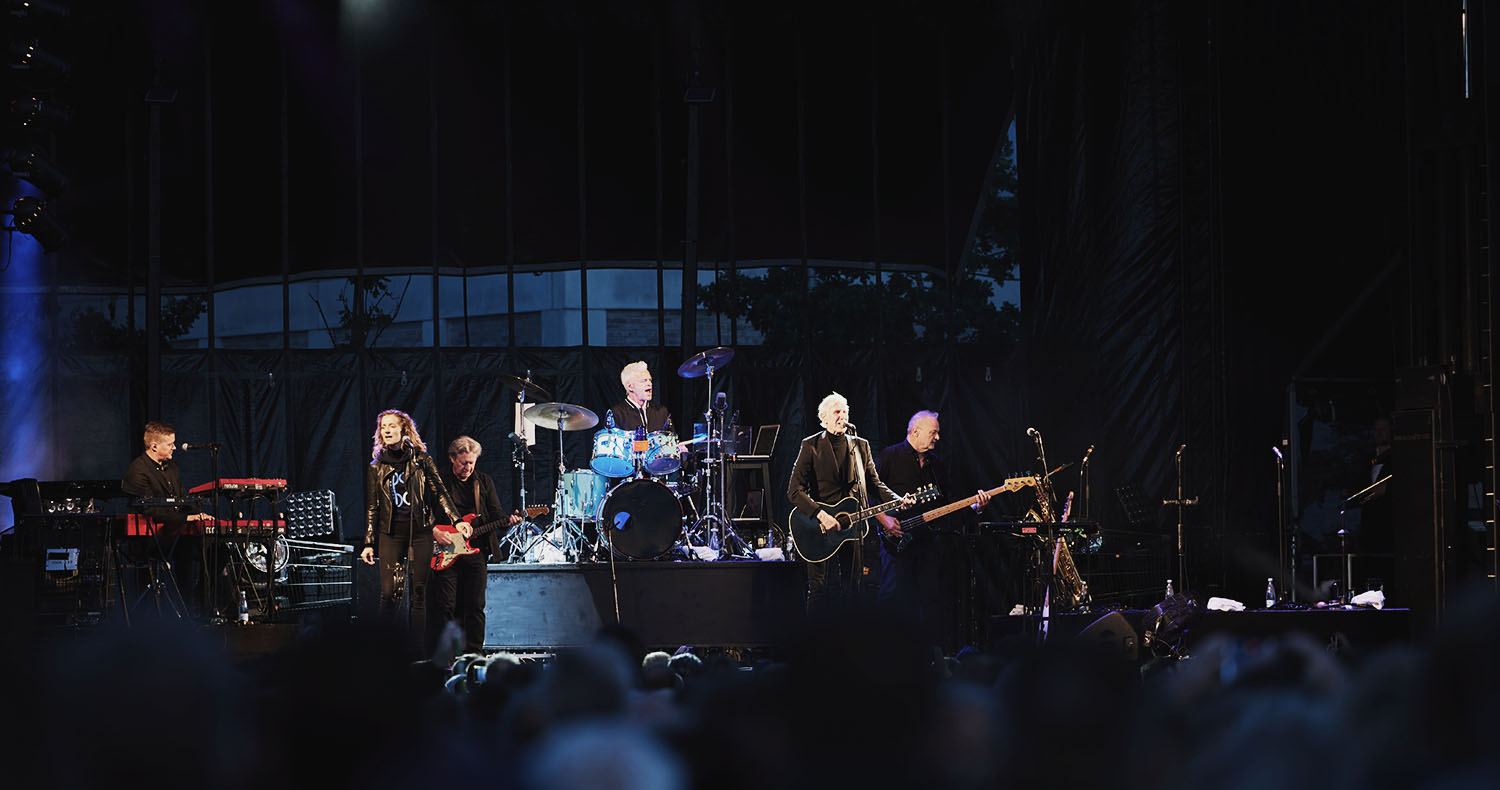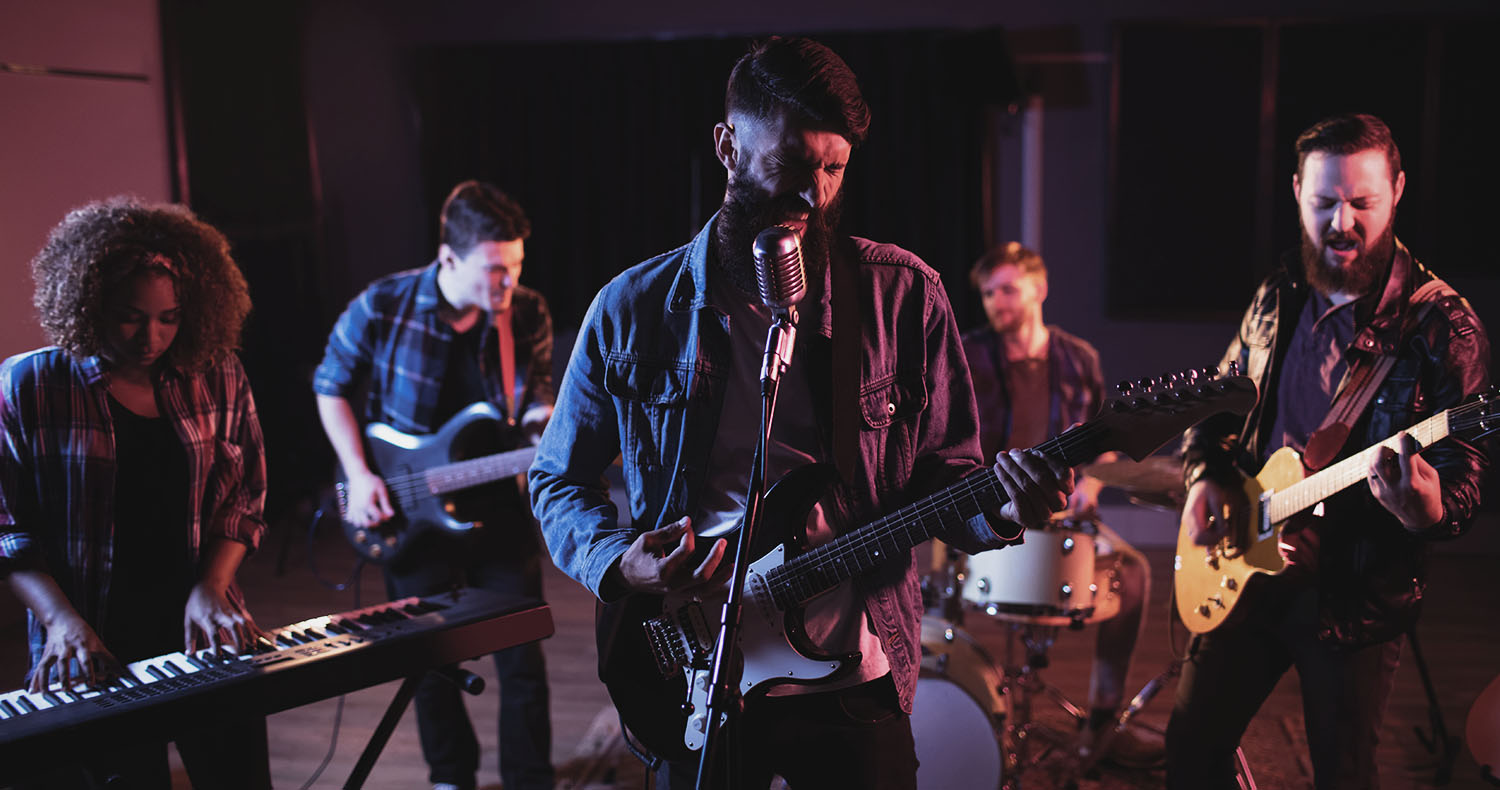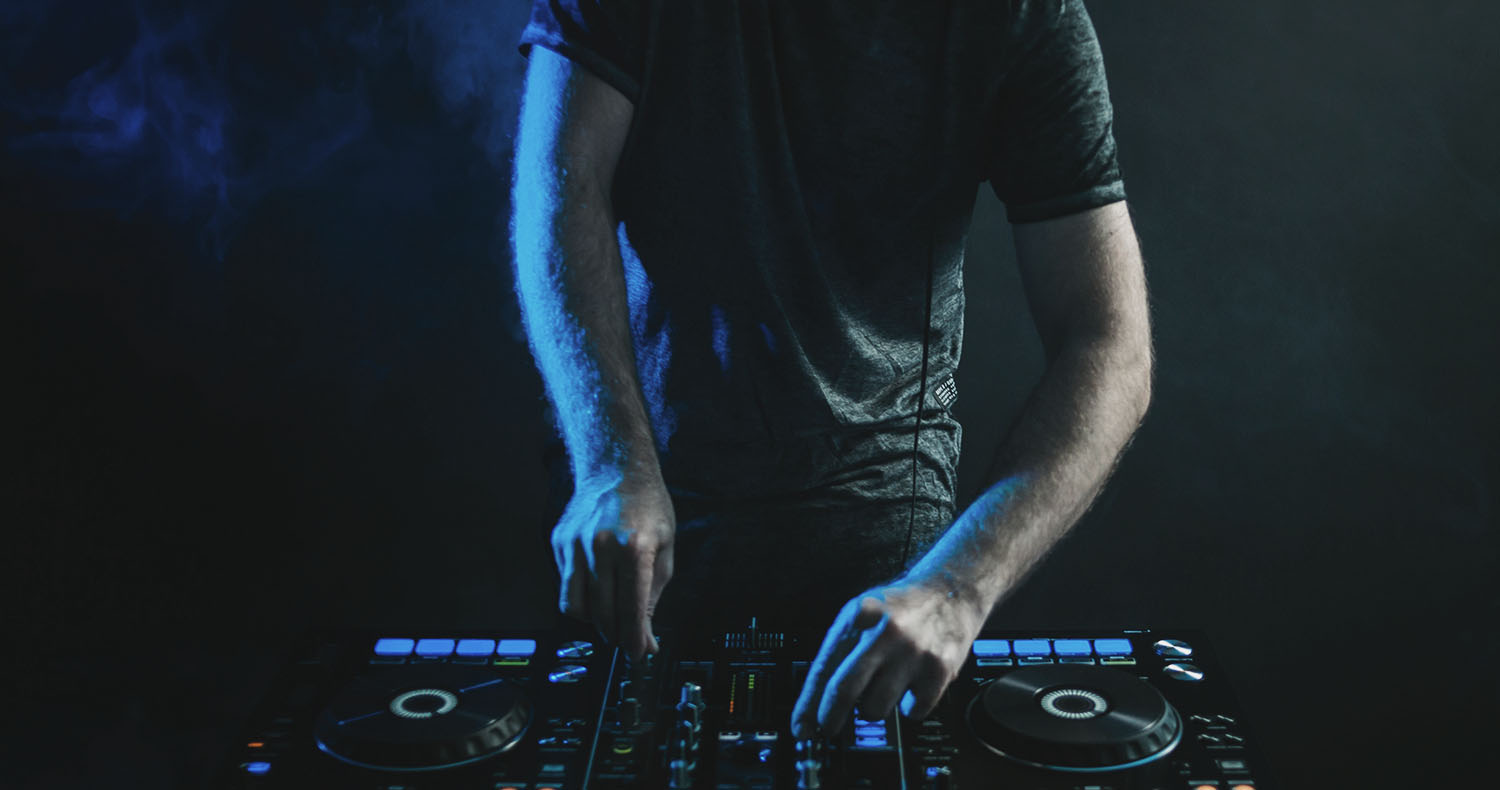Blog
Página: 2
As a bassist, bandleader, teacher, and music copyist, I’ve worked with hundreds of singers throughout the years. Though working musicians know hundreds of tunes, singers need to have good charts in order to have their music played the way they want. I define a «good chart» as a piece of written music that effectively tells the musicians what they should play. Written music comes in seven basic forms: chord charts, sheet music, songbooks, lead sheets, fake books, master rhythm charts and fully notated parts. As a musician has a responsibility to play the chart before him correctly, the supplier of the chart has the responsibility of providing the right kind of chart. Knowing what type of chart to use for what kind of tune or gig is very important. This article explains what the different types of charts are, and under what circumstances to use them. I hope you find it useful. TYPES OF EDM MUSIC Charts can be simple or elaborate according to the style of music and type of gig. Cover tunes are traditionally learned from recordings; classical and choral music can be found in sheet music stores as well as in various music catalogs; numerous tunes will be found in music books of all kinds; and many public libraries carry recordings and written music for your use. The word «chart» refers to any piece of written music or any arrangement (music that has been adapted in a unique manner) of a tune. Decades ago it was strictly a «cool» slang term for a tune, but any piece of music could be called a chart these days, though a classical buff might not refer to a Mozart work as a «chart.» Knowing what type of chart to use for what kind of tune is very important. When you’re playing a gig and someone hands you a chart — it is what it is and you either read it well or not. But, if you buy charts, have them made for you or provide them yourself, you need to know which kinds to use for which situations. Years back, while doing singer showcases, singers brought in all kinds of charts: good ones, bad ones, incorrect ones, inappropriate ones, and it was a real pain. The singers who provided the right kinds of charts got their music played the way they wanted. The singers who had the wrong kinds of charts didn’t, and weren’t very happy about it. Unless a musician already knows the specific parts, he can only play according to what’s on the chart before him. Though a good musician can improvise a good part in any style, if a specific musical line needs to be played, it needs to be written out. As a musician has a responsibility to correctly play the chart before him, the supplier of the chart has the responsibility of providing an appropriate one. Without getting into too many music notation specifics, here are the different kinds of charts and when they are used: 1. HOUSE A chord chart contains the chords, meter (how the song is counted, e.g., in 4 or in 3 (like a waltz), and the form of the song (the exact order of the sections). This type of chart is primarily used when: 1. the specific musical parts are improvised or already known, but the form and chords need to be referred to, 2. to provide chords to improvise over, or 3. when a last-minute chart needs to be written, and there isn’t time for anything more elaborate. A chord chart does not contain the melody or any specific instrumental parts to be played. To play from simple chord charts a musician basically needs to have steady time, know the chords, and improvise his part in whatever style the tune is in. 2. TECH HOUSE Sheet music is a store-bought version of a song printed by a publisher, which contains the instrumental part, chords, lyrics, melody and form. An instrumental piece will, of course, have just the music. Sheet music is written for both piano and guitar. Guitar sheet music is in standard notation (often classical), as well as in TAB. A good piece of sheet music will always say whether it’s for piano or guitar. Most sheet music is not meant to be completely representative of the actual recording, and the actual arrangement that you’ve heard on a recording is seldom present. Many people have experienced the frustration of getting the sheet music to a song they like, playing it, and discovering that the chords are different from the recording, and sometimes the form is too. Unfortunately that’s the way it is a lot, and it could be for a number of different reasons. To get the exact arrangement and chords, you need to do a «takedown» of the song: learn it by ear. A takedown is when you listen to a piece of music and write it down. Takedowns can range from simple chord charts to elaborate orchestral parts or anything in between. In order to do good takedowns, you need to have good ears, understand and be fluid with music notation to the complexity of the type of music you’re working with, and preferably understand music (the more the better). Having «good ears» consists of recognizing and understanding the music, whether heard on the radio, played by another musician, or heard in your head. 3. DEEP HOUSE Songbooks are compilations of many tunes and often contain the same information that sheet music does, along with the chords and arrangement being different from the recording most of the time. Sheet music commonly has full introductions and endings, whereas songbook tunes are generally shortened to create space in the book for more tunes. Sheet music is generally written to be played on a keyboard, but songbooks come in different styles and for different instruments. They are compiled by artist, style, decade, and in various collections including movie themes, Broadway hits, etc. Songbooks are a good reference source when other,
Music is a big part of civilization. Centuries had passed but music survived and even grew to greater heights every single decade. As a matter of fact, the demand of music has been rising very steadily in the past 10 years and it will continue that way in the foreseeable future. It comes along with the big amount of revenue the music industry is currently getting year after year. It is an unstoppable force as people always look up for the next great artist around the corner, thus continuing the cycle and the relevance of music. The demand of music content is at an all time high. The global music revenue since the turn of the century has been steady. The currency is measured in billions. As the technology grew, music got more technical, complex and in demand. Others take credit for using music they don’t own. Nowadays, independent musicians are well aware of protecting their work for legal purposes. Through music licensing, you can be ensured of your asset/work being protected legally. What is music licensing? Music licensing is the licensed used for copyrighted music. This allows the owner of the music to maintain the copyright of their original work. It also ensures the owner of the musical work to be compensated if their music is being used by others. The music licensing companies has limited rights to use the work without separate agreements. In music licensing, you could get your work licensed in the form of music, composition and songwriting. During the music licensing process, there are terms that would be discussed by the groups involved. If you are an independent musician, you would be the licensor. You are the one responsible of the music created, thus you are the copyright owner of the licensed work. A licensee would be the music licensing company as they would be the one who will distribute your work to other industries. They will also collect the royalty fees as distribute them back to you if your music is included in live performances, TV shows, ads, campaigns, video games, etc. There are also two kinds of contracts in music licensing, namely exclusive contract and non-exclusive contract. Exclusive contract means having your work licensed exclusively to a single music licensing company. Only a single company has the authority to distribute and market your work. If you signed an exclusive contract to your song or album, you cannot use the same music contents and get it signed by other music licensing companies. The agreement is exclusive and confidential to the licensor and the licensee. Non-exclusive contract allows a second party to distribute your work and it doesn’t prohibit the licensor to sell their music to other music licensing companies or licensees. An independent musician can sign a non-exclusive contract to multiple companies using the same music content. Non-exclusive contracts are generally used to prevent an individual from being locked into a restrictive contract before their work gains popularity. This type of contract is designed to protect music artists from being taken advantage of in the early stages of their respective careers while on the process of getting their music out to larger audiences. There are also cases which involves direct payment for used music content. This is called Sync Fees. Sync fee is a license granted by a holder of a copyrighted music to allow a licensee to synchronize music with visual media such as ads, films, TV shows, movie trailers, video games, etc. For example, a video producer is in dire need of music content for a certain project and is in a limited time of finding one. In these cases, the artist and the music licensing company will be contacted directly for the possible use of the original work and negotiate the upfront payment involved. Sync fees can range from a few dollars to a couple of hundred dollars or up to thousands. The payment usually depends on how big and established a company is. If it is a well known company, there is a probability that the sync fee will spike up in value. We need to understand that businesses nowadays are paying premium for music at an all time high. The influx and revenue generated on different industries are worth billions of dollars and the music artists who got their music licensed will get a big share of that money. The content of music is very important. Every single company need visual and audio content. You can’t do ads, shows and movies without having any music content. Music licensing brings compensation for assets used. This is called royalty fees. A royalty fee is the payment collected by one party from another for the ongoing use of a copyrighted asset. You can get compensated if your work is featured on live public performances. For every live use of your music, you get compensated as you own the copyright of your work. The American Society of Composers, Authors and Publishers (ASCAP) has collected over $941 million dollars in licensing fees and distributed $827.7 million dollars in royalties to its members back in 2014. BMI on the other hand, collected more than $1.013 billion dollars in license fees and distributed over $877 million dollars in royalties to its members during the year 2015. Music licensing is the modern way of earning through music. In the past few years, the physical sales had gone down. Streaming music has taken over because it’s more convenient and practical with the help of the World Wide Web. With the rise of streaming sales, the figures that could be collected as royalty fees could spike up in the years coming. In fact, as stated in an Australian financial review website, streaming generated $2.5 billion dollars in US music sales last year, overtaking digital downloads as the industry’s biggest source of music revenue. As stated in the picture below, the global streaming of music is projected to reach greater heights in terms of revenue in the upcoming years.
Music is a form of art that involves organized and audible sounds and silence. It is normally expressed in terms of pitch (which includes melody and harmony), rhythm (which includes tempo and meter), and the quality of sound (which includes timbre, articulation, dynamics, and texture). Music may also involve complex generative forms in time through the construction of patterns and combinations of natural stimuli, principally sound. Music may be used for artistic or aesthetic, communicative, entertainment, or ceremonial purposes. The definition of what constitutes music varies according to culture and social context. Greek philosophers and medieval theorists defined music as tones ordered horizontally as melodies, and vertically as harmonies. If painting can be viewed as a visual art form, music can be viewed as an auditory art form. The broadest definition of music is organized sound. There are observable patterns to what is broadly labeled music, and while there are understandable cultural variations, the properties of music are the properties of sound as perceived and processed by humans and animals (birds and insects also make music). Music is formulated or organized sound. Although it cannot contain emotions, it is sometimes designed to manipulate and transform the emotion of the listener/listeners. Music created for movies is a good example of its use to manipulate emotions. Music theory, within this realm, is studied with the pre-supposition that music is orderly and often pleasant to hear. However, in the 20th century, composers challenged the notion that music had to be pleasant by creating music that explored harsher, darker timbres. The existence of some modern-day genres such as grindcore and noise music, which enjoy an extensive underground following, indicate that even the crudest noises can be considered music if the listener is so inclined. 20th century composer John Cage disagreed with the notion that music must consist of pleasant, discernible melodies, and he challenged the notion that it can communicate anything. Instead, he argued that any sounds we can hear can be music, saying, for example, «There is no noise, only sound,»[3]. According to musicologist Jean-Jacques Nattiez (1990 p.47-8,55): «The border between music and noise is always culturally defined–which implies that, even within a single society, this border does not always pass through the same place; in short, there is rarely a consensus…. By all accounts there is no single and intercultural universal concept defining what music might be.»
Have you ever wondered how your favorite musicians make such great music? The answer is this: They fully understand how musical emotion works, and how to use this to create intense emotions in YOU while you listen to them. Understanding musical expression is key to becoming a great guitar player and musician. When you control emotion in music, you will gain the power to greatly affect the listener’s experience. Most guitarists want to be able to express themselves better with their guitar playing; however, the majority of guitar players have no idea how to actually practice this skill. This leads to a lot of time being wasted on practicing guitar in a way that does not produce big results. The solution to this problem is to develop a more accurate fundamental understanding of how to develop creativity in music. Many guitar players try to enhance their musical creativity skills by searching the music of their favorite bands for cool riffs and guitar ideas and playing them over and over. This is certainly an enjoyable activity to do when playing guitar, but in reality it does not do very much to help you to learn musical expression. If you spend a great deal of time on this, you will be missing out on the two most critical parts of being able to create emotion in music.
One good thing about music, when it hits you, you feel no pain. Liverpool International Festival Of Psychedelia announces first wave of acts. The next Liverpool International Festival Of Psychedelia will take place from 23–24 September. Now in its fifth year, the festival describes itself as a “pan-continental celebration of audio-futurists, operating at the bleeding edge of today’s psychedelic renaissance”. Artists on the bill include Super Furry Animals, Demdike Stare, Eartheater, Sliver Apples, Acid Mothers Temple, Ashtray Navigations, Taman Shud, Silver Waves, Cavern Of Anti-Matter, and more. Tokyo based label Guruguru Brain will also present Narrow Road To The Deep Mind, which promises to present some of ”the finest PZYK wunderkinds from across the Asian underground”. The festival takes place at Camp And Furnace, Blade Factory Liverpool. Tickets are on sale now via the festival’s website.
We had some truly stellar photos come out of our photographers this week, as they attended shows from Vance Joy, Ball Park Music, Matt Corby and Groovin The Moo sideshows, with the common theme being some amazing light shows. As Forbes notes, in the missive, Sixx and bandmates James Michael and DJ Ashba implore YouTube to work harder to protect the rights of artists whose work frequently appears on the platform without proper payment, clearance or copyright, noting their own positions of privilege as successful musicians — and wanting to use that advantage for the benefit of smaller acts, in keeping with their history of artist advocacy. «We recently completed our fourth album called Prayers For The Damned, in our singer/producer James Michael’s recording studio,» the band began. «We are a lucky band, grateful to have all had success prior to the creation of Sixx:A.M. Music expresses that which cannot be put into words and that which cannot remain silent. «Nikki came from Mötley Crüe, DJ played guitar in Guns N’ Roses for the past six years and James has had a successful career as a writer and producer. Releasing an album and being part of a tour going on sale allows us to use the promoters’ marketing money to create a larger platform to get our message out, and having a record company that generates publicity gives us an opportunity to speak up about issues we think are important — specifically the crisis with the music business and YouTube.» The band go on to recall the occasion on which they backed Taylor Swift «when she spoke up about the absence of royalty payments to artists by Apple Music», as well as explaining that the band has «long been an advocate for new artists», as evidenced by Sixx’s predilection for featuring emerging acts on his radio show, before taking aim at Google (and its founders, Larry Page and Sergey Brin) for its payment strategies through the framework of comparing its annual revenue to that of the global music industry.
Nightlife in Copenhagen is set for a heavy blow as one of the city’s main clubs, Culture Box, will lose a substantial amount of funding from 2017. Since 2005, the Danish government has provided the club with €240,000 (1,800,000 Danish kroner) per year, but that’ll end at the end of 2016. The club describes the planned cancellation of funding as a «very hard blow» as the money goes towards bookings and maintaining facilities. The press release also reads: «We are shocked that The State of Denmark has decided to remove the cultural support for the venue, and by that the support for electronic music culture.» Some people have lives; some people have music. House and techno has had a heavy presence at the club since it opened, with the likes of Moritz von Oswald, Ellen Allien, DJ Koze and Nina Kraviz all playing.
San Bernardino County Supervisor Janice Rutherford said Tuesday she will place an item on the May 24 board agenda calling for an end to rave-style events at the San Manuel Amphiteater in Devore. Rutherford’s decision came amid continued and growing complaints from Devore and Crestline residents about excessive noise generated from electronic dance shows at the venue, mainly the Nocturnal Wonderland and Beyond Wonderland electronic dance shows, until the wee hours. Residents said the music is so loud it causes their windows to rattle and their walls to vibrate. In addition to the noise, the concerts draw heavy traffic that traps residents in their homes and is a magnet for rampant drug use and drug sales, overdose deaths and public indecency, residents say. During an April 5 board meeting, Rutherford said dozens, if not hundreds, of residents have complained about the shows since they began at San Manuel Amphitheater in 2013, when the county entered into its contract with Live Nation Worldwide. The dance shows were previously held at the National Orange Show Events Center in San Bernardino, but continued complaints of a similar nature from residents and business owners forced their relocation. During the April 5 Board of Supervisors meeting, Rutherford asked County Counsel Jean-Rene Basle how best to invoke the provision of the county’s contract with Live Nation allowing the county to terminate the contract should the dance shows become a public safety hazard or are subject to resident complaints due to noise or other nuisance behavior. Basle suggested that Rutherford put it before the board for a vote.
 Adorain Radio
Adorain Radio 










